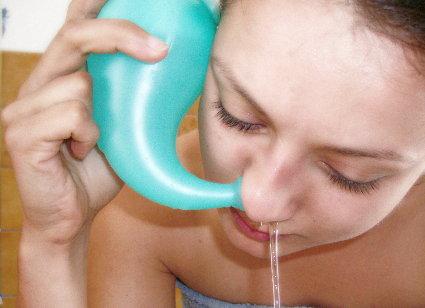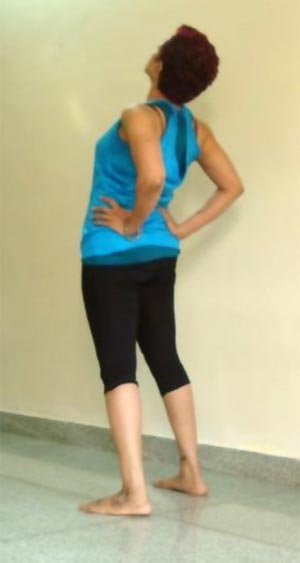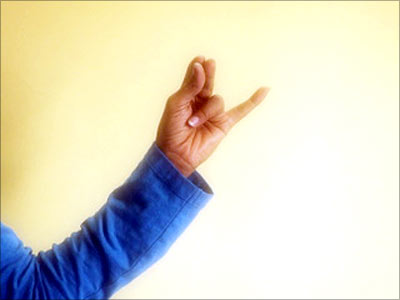Photographs: Shameem Akhtar Shameem Akhtar
A regular practice of yoga is known to control migraine attacks. Unfortunately, unless the practice is daily and regular, the relief would be limited. But it is one of the best complementary practice to conventional treatment that you may be undergoing, in terms of medication and diet control.
In migraine attacks diet is also known to be a trigger. It also has psychosomatic triggers that may be dealt with through a practice of meditation and pranayama.
Initially, the yoga sadhana/practice may be gentle, to acclimatise the body to physical exertion. Later on, normal practice may be done without any inhibition. Obviously, you may not practice when there is an attack. However, you will find that migraines become less after just a few months, and for many who are dedicated and regular with yoga, the attacks may actually drop.
Shameem Akthar, yogacharya trained with the Sivananda Vedanta Yoga Center, gives you yogic tips on how to deal with this problem.
Bhramari pranayama (Humming bee breathing practice)
Sit in any meditative pose. Eyes shut. Hands on knees, in mudra. Draw a few deep breaths. Inhale, then exhale with a long-drawn out humming sound. This is one round. Do up to nine rounds.
Asanas to control migrane attacks
Image: Jal NetiPhotographs: Aikhan/Wikimedia Commons
Jal neti (Nasal wash)
This needs to be learnt from an expert, though it is a rather simple practice. You need a jal neti jar (available with yoga centers, or at certain specialists stores that sell spiritual or yoga books and products; may be available online too).
You need water which is lukewarm,with a pinch of salt, at one teaspoonful for half a liter of water. It should not be too salty or too bland because either way that will disturb the nasal lining.
Jut the face ahead, tilt the head to the left, as you place the nozzle of the filled up neti jar at the right nostril. This will ensure that the passage of water is smooth.
Gently exhale a few times. Then repeat for the other nostril.
It takes a few days of practice to get it right. It needs expert monitoring. You may however not try this when having a sinus attack or other respiratory problems, if doing it for the first time.
Points to note: Doing a mild round of bhastrika (bellows breathing) or kapalabhati (skull cleansing breathing practice after the nasal wash will remove traces of the water).
Avoid lying down after the wash, otherwise any trace of water remaining may run down the sinus cavities.
Benefits: It is used in therapy for all major and chronic ailments, like migraine. It clears the nasal and sinus cavities. It is said to keep one youthful.
Asanas to control migrane attacks
Image: Ardha chandrasana (Crescent pose, standing version)Photographs: Shameem Akhtar
Ardha chandrasana (Crescent pose, standing version)
Stand up straight. Keep feet together. Inhale. Raise both arms up, tilting head up, to look at ceiling. Push the stomach ahead, maintaining focus on the feet to ensure that you keep yourself grounded.
Stay for a few seconds, breathing gently. Release the arms back to starting position, beside the body. Relax. Do a few times, holding only for a short duration initially.
Benefits: Activates the upper body, releases contractions and facilitates smoother flow of breath into the lungs. Improves breathing under stress. Boosts immunity. Is used to treat chronic ailments like headaches.
Asanas to control migrane attacks
Photographs: Shameem Akhtar
Samkonasana (Right angle pose)
Stand up straight. Feet should be together. Inhale, raising the arms high. Exhale, push your hips back, bringing hands so your body forms a right angle.
Keep your point of focus between the palms which should face each other. Continue normal breathing. Hold for ten seconds. Then repeat thrice.
Benefits
It is a counter pose to the backbend (crescent) suggested above. It challenges the same muscles in an opposing fashion, clearing stiffness and builds mental stamina.
It is a safe alternative to a full forward bend which can be intimidating for those who are sick.
Asanas to control migrane attacks
Photographs: Shameem Akhtar
Mahasirs mudra (Hand gesture for the head)
Sit in a meditative manner. Press the ring finger at the base of the thumb which should lightly touch the tips of index and middle fingers. The little finger is extended. Do for each hand. Practice daily, if having a chronic problem.
Benefits
It is the most powerful mudra to help control headaches and pains.






Comment
article